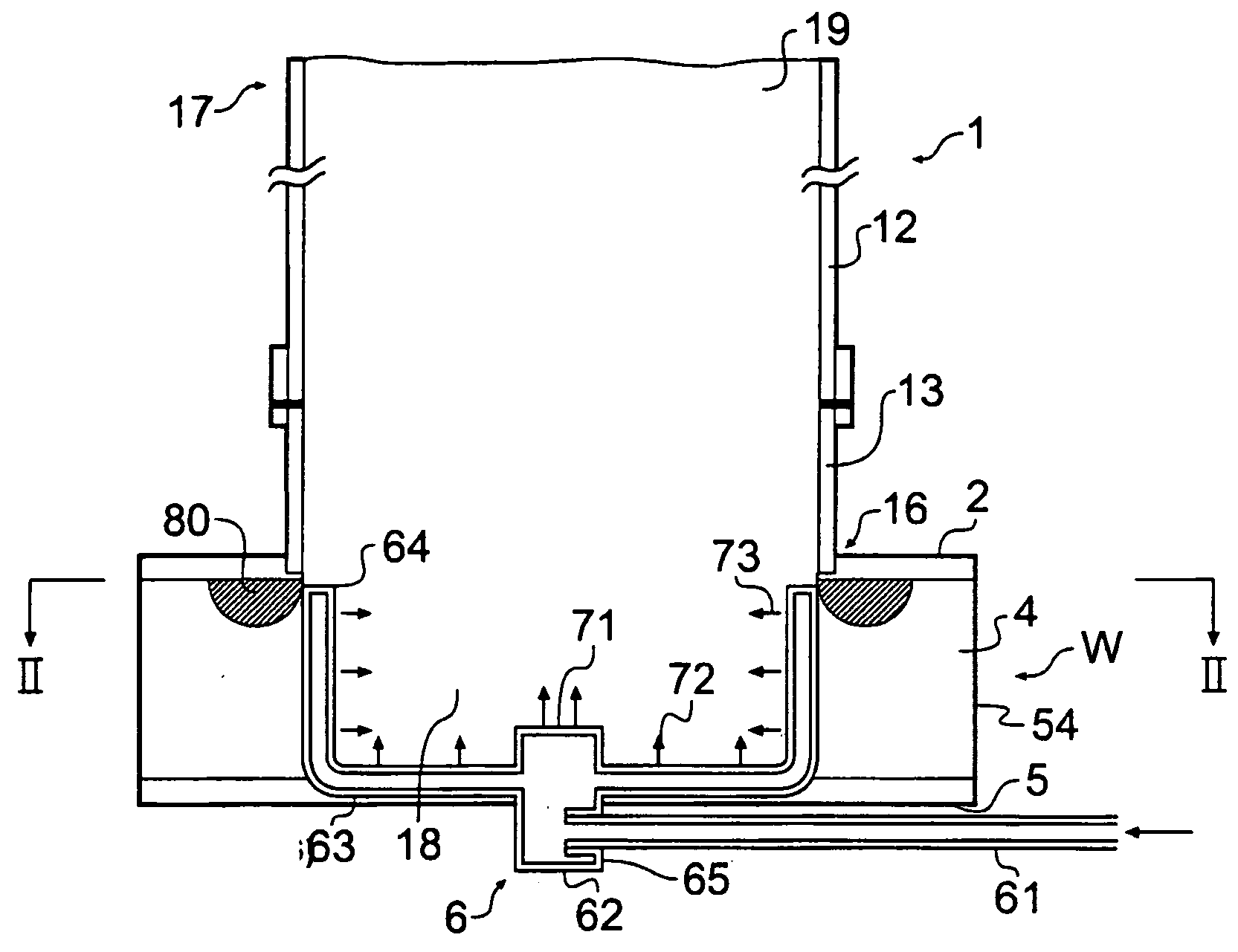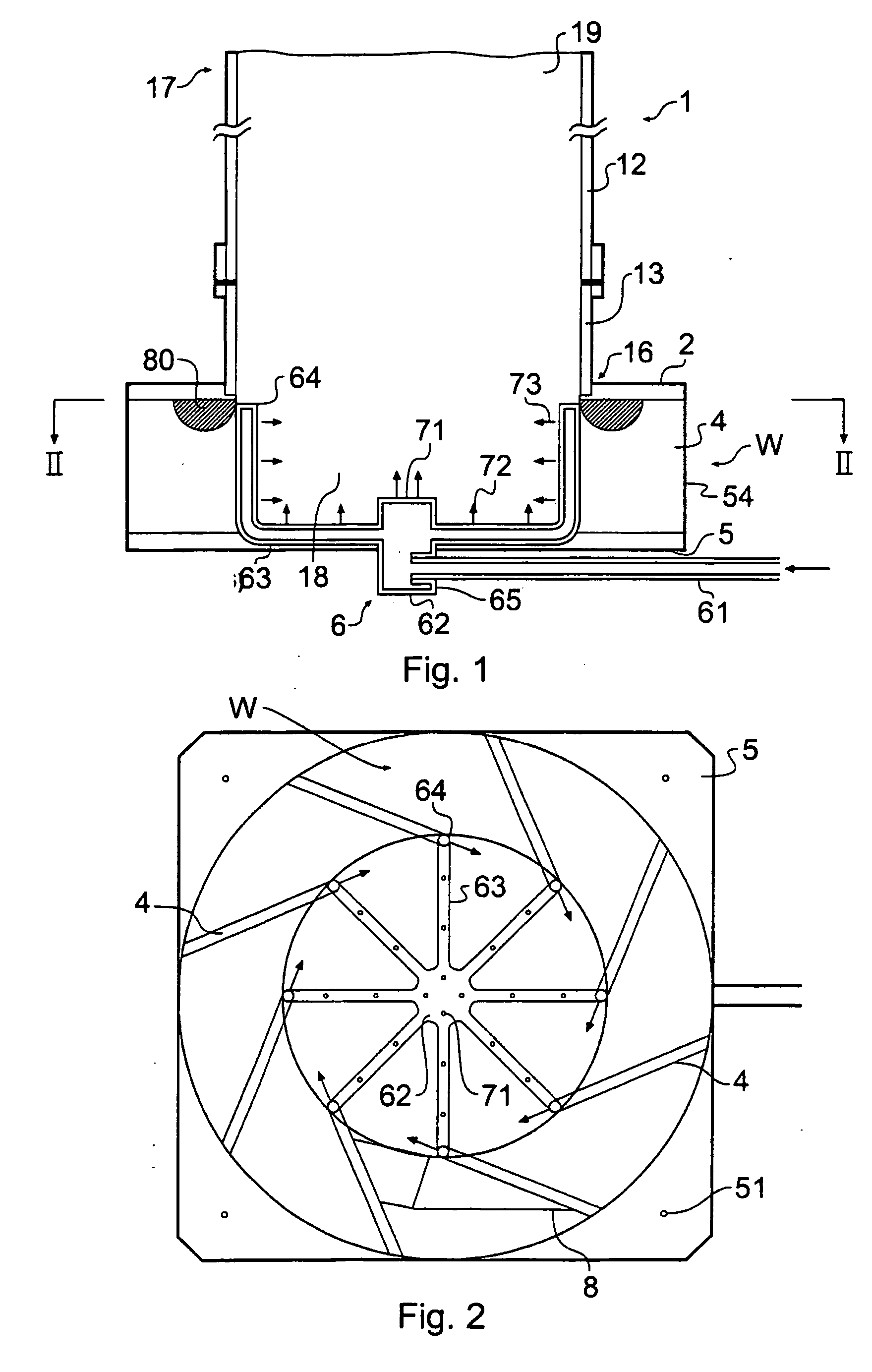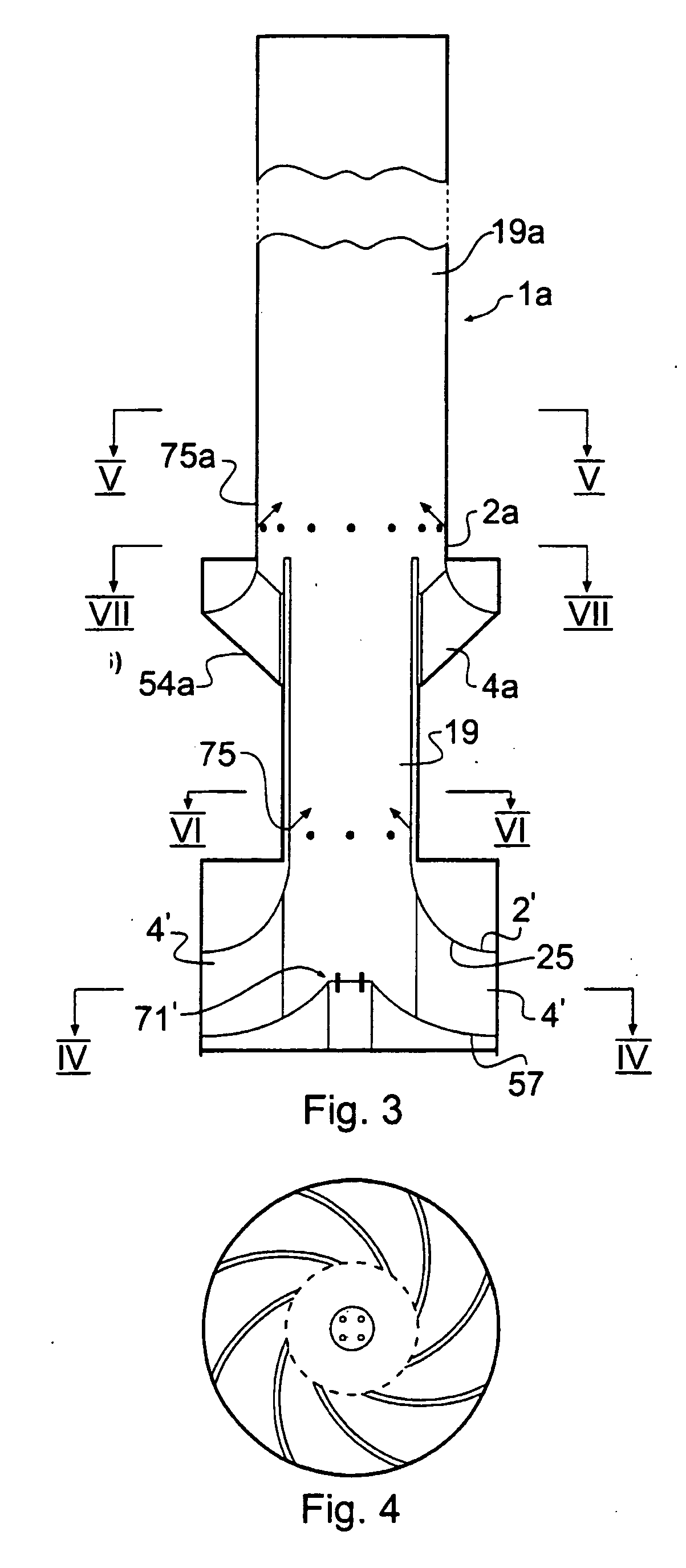Mixing apparatus
a technology of mixing apparatus and mixing chamber, which is applied in the direction of mixers, fuel gas production, water/sludge/sewage treatment, etc., can solve the problems of algae growth, unsuitable use, and usually unsuitable use, and achieve high air flow rate, reduce choking, and improve the effect of water flow ra
- Summary
- Abstract
- Description
- Claims
- Application Information
AI Technical Summary
Benefits of technology
Problems solved by technology
Method used
Image
Examples
Embodiment Construction
[0027] With reference to FIGS. 1 and 2, a mixing / aerating apparatus has an upright cylindrical draft tube 1 open at its upper (exit) and lower ends 17,16. The material of the tube 1 is not critical; it may be of metal or plastics depending on circumstances. In this embodiment the internal diameter of the tube is 600 mm. The performance of the device in terms of water flow varies in a predictable manner according to the length of the draft tube and the depth of water. Typically the length is from 1 or 2 to 3 or 4 m for use in mixing liquid layers e.g. in a reservoir. For waste treatment it may be shorter, in accordance with the available depth of liquid. The bottom (intake) end 16 of the draft tube 1 is joined to a flat annular ring plate 2 which projects radially outwardly from the base of the tube. For convenience of transporting the device, in practice a short tube stump section 13 is bonded or welded into the opening of the ring plate 2 and then in a separate step screwed or bond...
PUM
| Property | Measurement | Unit |
|---|---|---|
| angle | aaaaa | aaaaa |
| radius | aaaaa | aaaaa |
| radius | aaaaa | aaaaa |
Abstract
Description
Claims
Application Information
 Login to View More
Login to View More - R&D
- Intellectual Property
- Life Sciences
- Materials
- Tech Scout
- Unparalleled Data Quality
- Higher Quality Content
- 60% Fewer Hallucinations
Browse by: Latest US Patents, China's latest patents, Technical Efficacy Thesaurus, Application Domain, Technology Topic, Popular Technical Reports.
© 2025 PatSnap. All rights reserved.Legal|Privacy policy|Modern Slavery Act Transparency Statement|Sitemap|About US| Contact US: help@patsnap.com



